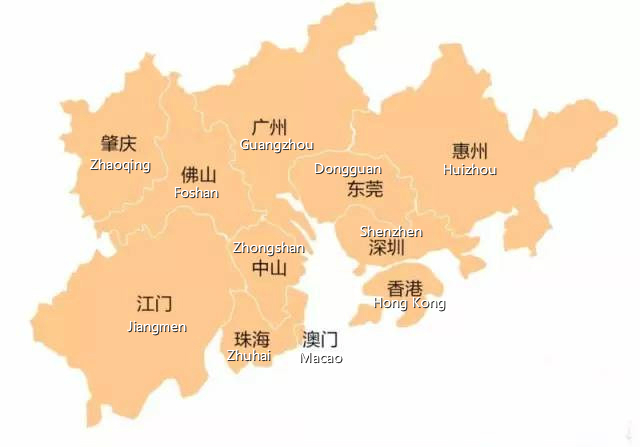Greater bay area, a future boon to economic growth and urban development

A map of the planning Guangdong-Hong Kong-Macao Greater Bay Area
Bay areas, an important form of coastal economy, are a highlight of the global economic landscape. A typical feature of world-class coastal cities, they drive the economic transformation in the leading global economies. At present, bay areas of New York, San Francisco and Tokyo have become crucial growth poles and technological innovators through their openness, innovation and globalization.
In 2015, the economic scale of the cities involved in the Guangdong-Hong Kong-Macao Greater Bay Area hit $1.4 trillion. In the same period, the container throughput of relevant ports exceeded 65 million TEU and airport passenger throughput reached as many as 175 million visitors. The region has formed an industrial system driven by advanced manufacturing and modern services. The region has been deeply integrated with the world economy while the construction of infrastructure in the area is ongoing. Cooperation among Guangdong Province, Hong Kong and Macao special administrative regions has been extensive and profound, providing the basis for the region to establish a global bay area and world-class city clusters.
A framework agreement was signed on July 1 with the intent of deepening regional cooperation and promoting the construction of the bay area. It aimed to develop Guangdong-Hong Kong-Macao Greater Bay Area into a vital economic circle, a living zone suitable for business and tourism as well as a demonstrative area for cooperation in the region. The bay area is embracing new development opportunities as China’s government work report stressed mainland cooperation with Hong Kong and Macao.
Free trade zones are a necessity of a bay area. Adjacent to Hong Kong and Macao, Guangdong Province has such free trade zones as Qianhai, Hengqin and Nansha that can serve as the bedrock for the connection with Hong Kong and Macao. An overall plan for the bay area and coordination of city functions are the initial steps. Also, a network connecting these regions is in the works, including infrastructure, transportation, ports and airports. Finance should not only serve trade but also support the further development of real economy, such as shipping and technology. In addition, attention should be paid to social and public affairs in the Guangdong-Hong Kong-Macao Greater Bay Area. Relevant sectors touch upon tourism, health, education, culture and governance.
Multiple key factors can promote the economic development of the bay area. The most crucial engine lies in infrastructure, requiring the implementation of supply-side reform and an increase in related investment. Meanwhile, investment, innovation and new rules are the motivations for the sustainable development of Guangdong-Hong Kong-Macao Greater Bay Area.
The article was translated from Guangming Daily
